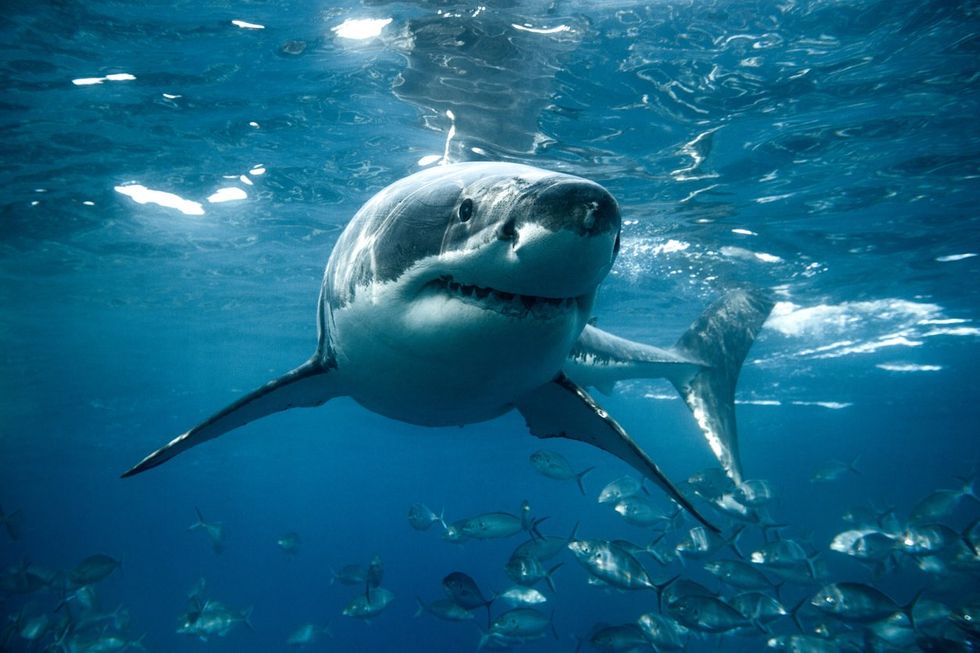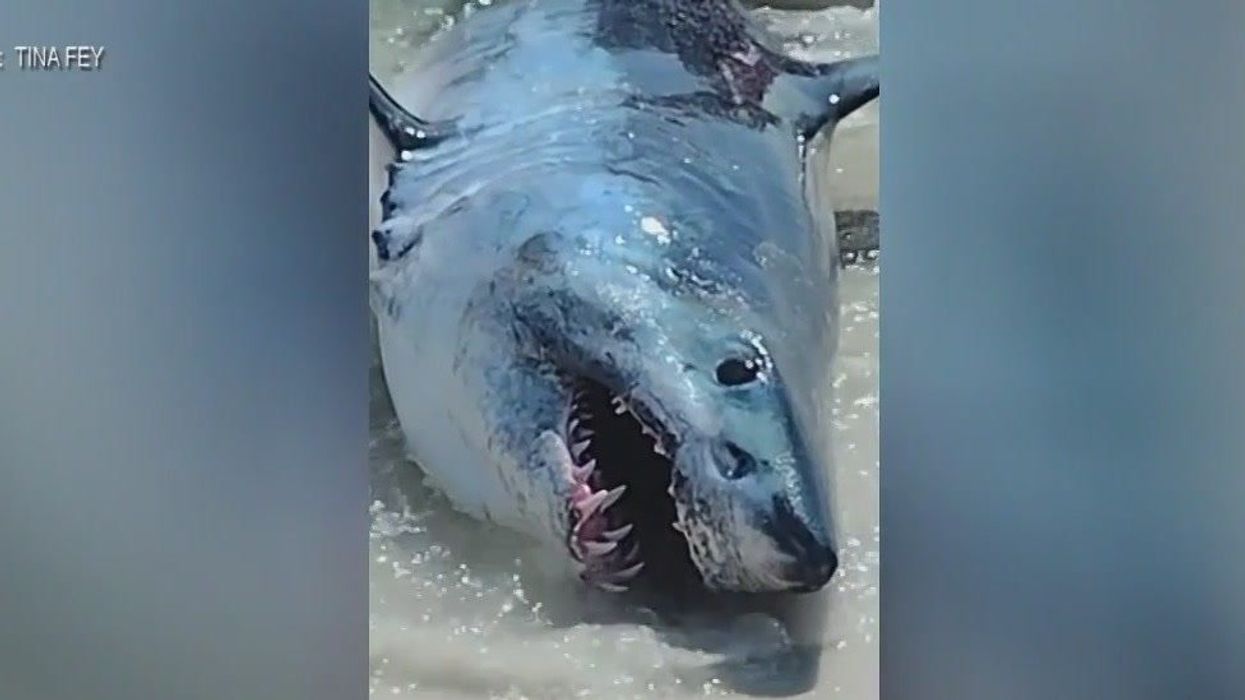Harry Fletcher
Jul 10, 2025
Massive shark rescued on Florida beach
Fox - 35 Orlando / VideoElephant
Great white sharks are displaying unprecedented behaviours, and experts can’t explain why.
One of the ocean’s greatest apex predators has been entering the twilight zone way beneath the surface of the ocean, and far beneath the areas they normally feed in.
The twilight zone, also referred to as the mesopelagic zone, is the area 200 to 1,000 metres down below the surface which is at least partly permeated by sunlight. The midnight zone, meanwhile, is found 1,000 to 3,000 metres down and is impenetrable to sunlight.
Now, a new study published in the journal PNAS offered insight into the behaviours of 344 tagged predatory fish including great white sharks.
Scientists would usually expect the creatures studied to dive to the deep scattering layer (DSL), which is full of small fish and other ocean life forms and therefore attracts more predators than other levels.

However, there was also evidence that suggested predators dove down far deeper than the DSL, and scientists don’t know why.
According to the research, great white sharks dive down to as deep as 1,128 metres.
Camrin Braun is assistant scientist at the Woods Hole Oceanographic Institution and study lead.
Braun told Live Science: "How, when, where they access the deep ocean certainly varies, but the clear anecdotal answer is that the deep ocean seems like an important habitat regardless of the predator species. It's clear there are good reasons for these animals to dive deep, otherwise why would they all do it?
"There's good evidence for some species/situations in which diving deep is clearly for foraging," Braun added. "So that supported our expectation. However, we also find several cases where we can pretty definitively say the use of the deep ocean is not for feeding – or if it is it represents a totally different kind of predator-prey interaction or mysterious prey resource."
The study could suggest that the twilight zone could be far more important to great white sharks and other predatory fish than previously thought.
"If it turns out that there is indeed more biomass in the twilight zone than in all current marine capture fisheries combined then it's possible to imagine a kind of mesopelagic 'gold rush' to catch and use this biomass," Braun said. "There are many 'ifs' in this chain and many issues in making mesopelagic fishing feasible but it seems that biomass may be important for predators. Therefore, we really need to better quantify those links between predators and mesopelagic biomass before we can sustainably harvest/use those resources.”
This article was originally published on 22 November 2023
Elsewhere on Indy100:
'Death' pool at bottom of ocean 'instantly' kills everything
How your summer holiday could be 'helping' aliens detect Earth from 200 light-years away
Sign up for our free Indy100 weekly newsletter
How to join the indy100's free WhatsApp channel
Have your say in our news democracy. Click the upvote icon at the top of the page to help raise this article through the indy100 rankings
Top 100
The Conversation (0)














